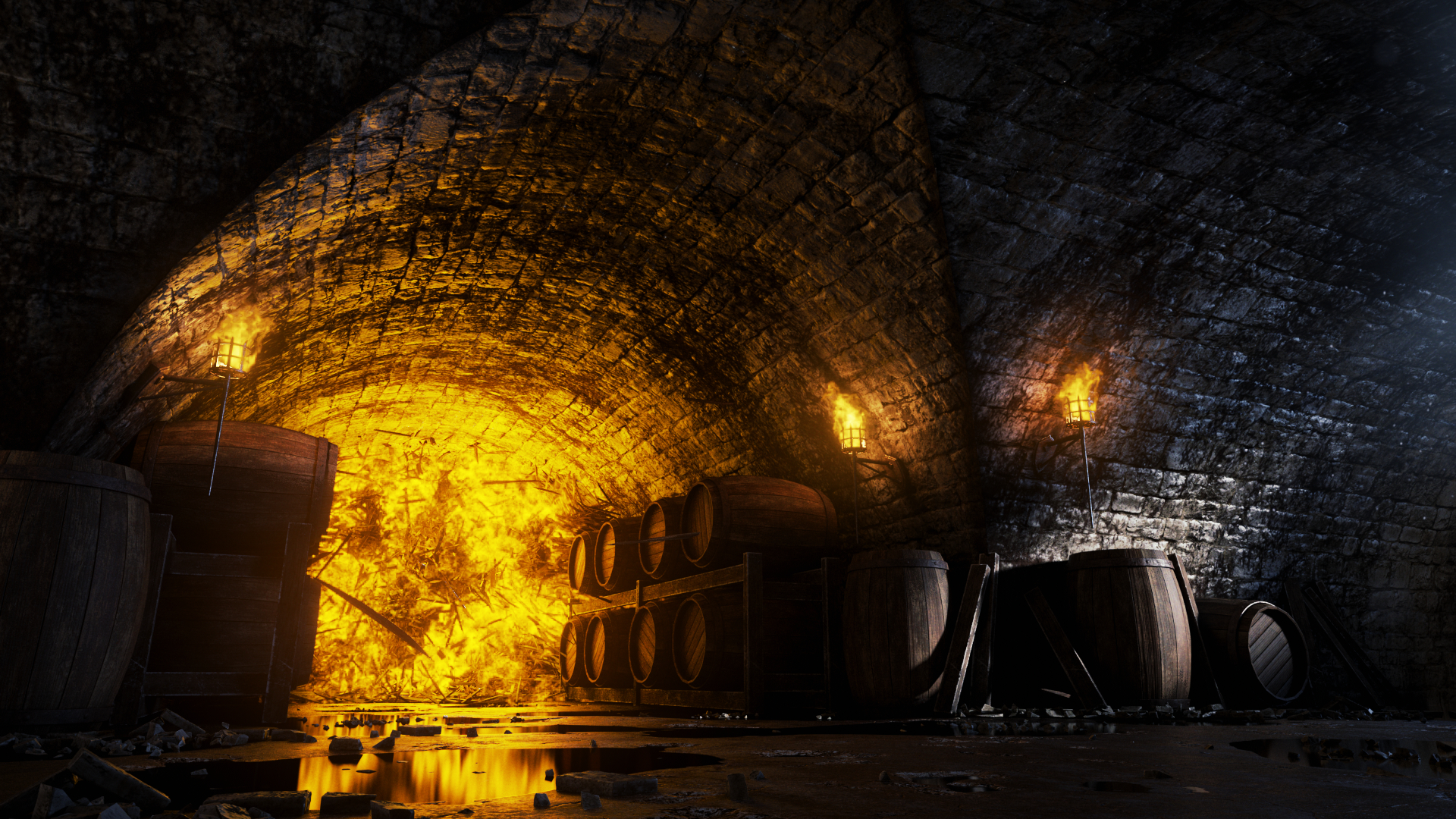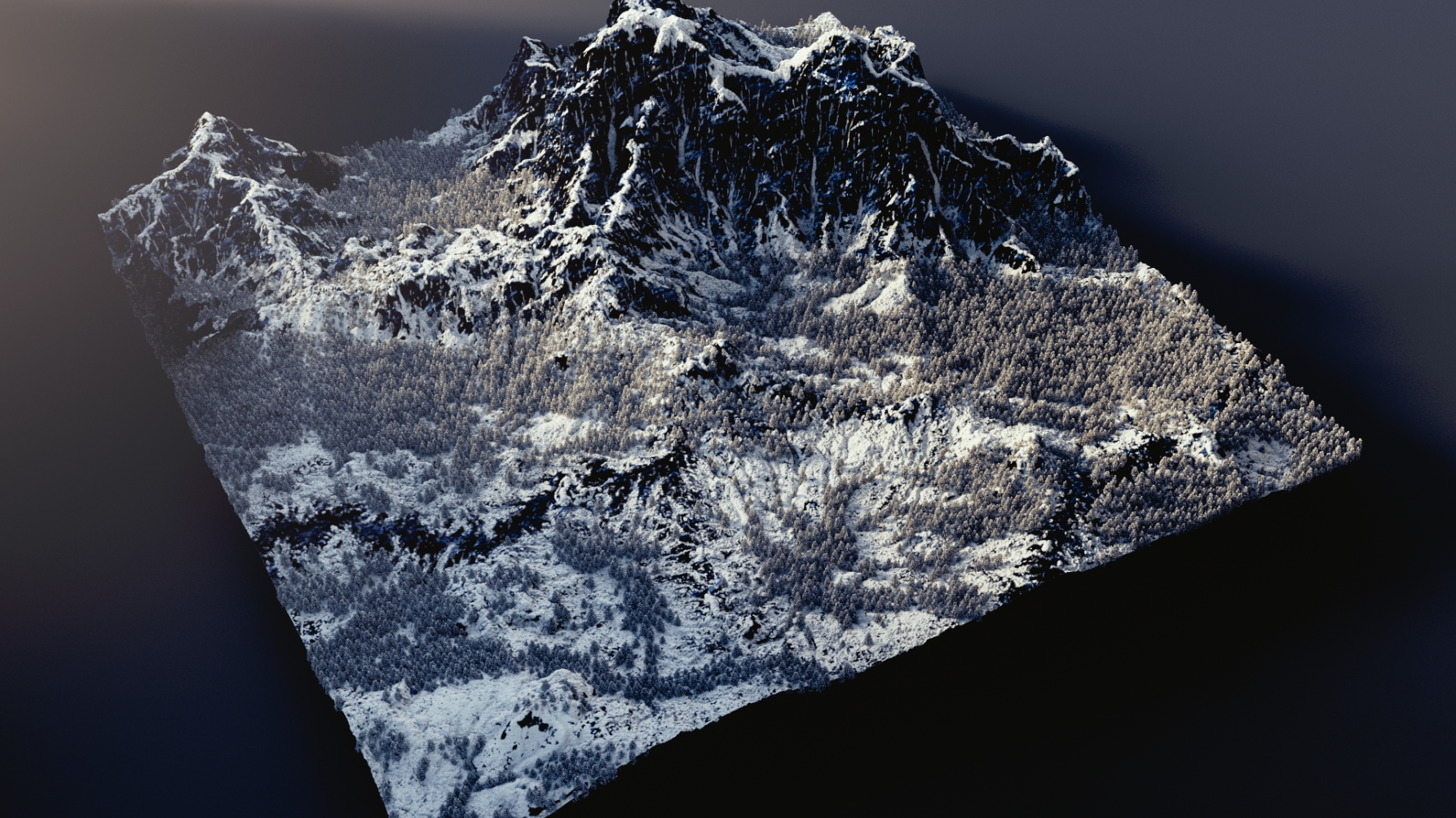Robby Branham
 Senior 3D generalist and compositing artist Robby Branham began his career working in commercial and feature film production in 2009. Since then, he has worked for companies such as Psyop, Digital Domain, Pixomondo, and Zoic Studios. His work can be seen in film, commercials, and game cinematics such as Microsoft’s ReCore and Supercell's Clash of Clans. He also teaches at the Gnomon School of Visual Effects, Games + Animation in Hollywood. His tutorials for The Gnomon Workshop include a guide to multi-pass rendering and compositing, and a new series on Houdini fundamentals. Below, Robby reveals what it takes to succeed as a 3D generalist, provides his tips for surviving as a freelancer, and explains why Houdini is now an essential tool for any artist to master.
Senior 3D generalist and compositing artist Robby Branham began his career working in commercial and feature film production in 2009. Since then, he has worked for companies such as Psyop, Digital Domain, Pixomondo, and Zoic Studios. His work can be seen in film, commercials, and game cinematics such as Microsoft’s ReCore and Supercell's Clash of Clans. He also teaches at the Gnomon School of Visual Effects, Games + Animation in Hollywood. His tutorials for The Gnomon Workshop include a guide to multi-pass rendering and compositing, and a new series on Houdini fundamentals. Below, Robby reveals what it takes to succeed as a 3D generalist, provides his tips for surviving as a freelancer, and explains why Houdini is now an essential tool for any artist to master.
GW: What's the main thing that viewers will learn from your multi-pass rendering tutorial?
RB: With 3D lighting/rendering, one of the most common questions I get is, “Where do I go from here?” My response is almost always compositing-related. The primary goal of the video was to help VFX artists understand the immense amount of control that they have over 3D renders in a particular compositing application. I wanted to bundle up a workflow that I have been using for many years into a simple and easy-to-follow tutorial series that provides a fast track for the technical and artistic sides of multi-pass rendering.

GW: What makes Houdini a valuable tool for generalists to master, as well as specialist TDs?
RB: With traditional 3D packages, it’s very easy to hit roadblocks. With Houdini, it’s also easy to dig deep into how 3D software works. The closer you get to that core, the easier it is to make it do the things that you need. Outside of FX animation, Houdini can also be used to do more generalist types of tasks, like modeling, set dressing, and scattering.
GW: A lot of artists find Houdini intimidating. How steep is the learning curve?
RB: In my experience, Houdini was very easy to pick up. The interface is actually very simple. Compared to traditional packages, there aren’t a lot of menus to dig around in. You can pick up files and reverse engineer them, which is great because it doesn’t leave a lot of guesswork on how to do things. The problem is, you can get exposed to the ‘under the hood’ areas very easily, which can be intimidating. My recommendation would be to stay close to the surface and get as far as you can there at first. The shelf tools are making it increasingly easy for artists to pick the software up as well.
GW: Are there any tips you can give to help non-users adjust to Houdini's procedural workflow?
RB: Working procedurally is a completely different mindset. Houdini does not force you to go deep into this: it just offers it as an option. It’s possible to use the shelf tools (which are similar to traditional packages) and not go into any deep procedural networks at first. Sticking with the presets and shelf buttons is a great way to get up and running quickly.
GW: How did you get your first job in CG?
RB: I didn't have the traditional ‘first job in CG’ moment. I started really young; I was hands-on with software like After Effects and Photoshop from when I was around 12 years old. I knew very early on that some sort of video work was what I was going to spend my time doing. I started picking up freelance video work when I was 15: mostly editing and basic compositing with After Effects. I went to school for visual effects and built up a stronger portfolio. I moved to Los Angeles in 2009, where I freelanced for as many studios as possible. A lot of my early jobs in LA were 911-style jobs, where the job is in crunch mode and they need all the help they can get to finish, which is a great way to bypass a lot of the hassle of trying to get your foot in the door with interviews.
GW: Are there any Gnomon Workshop tutorials that helped you in your own career?
RB: Yes, many. The most notable ones are Introduction to Nuke Compositing: VFX Compositing Techniques with Robert Nederhorst and Multi-Pass Compositing: 3ds Max Rendering Techniques with Tim Jones.

GW: What kind of work does a 3D generalist do?
RB: A true 3D generalist is a 3D artist who is multi-specialized, who can work amongst multiple departments, and be the glue on tougher tasks that are difficult for two separate artists to achieve.
On bigger jobs, early on, you would typically find me R and D'ing to overcome any bigger-picture technical hurdles the job needs to get over, building any tools needed for the for the team, or scripting and automating setups. Then typically I would move into asset production, texturing/shading 3D geometry, and helping to define the look of the scenes. After that I would move into shot production, either lighting/compositing or doing FX animation in Houdini.
GW: Which tools do you find essential in your work?
RB: The obvious ones would be Maya, Houdini, and Nuke. Other packages that have greatly improved my workflows in the last few years include Substance Painter and Redshift. Substance Painter has overhauled my texturing workflow and I no longer use any other 3D painting package. Redshift has sped up my rendering workflows and has allowed me to easily render cross-software, since it is integrated in both Maya and Houdini.
GW: As a freelancer, you work for a lot of studios. What are the pros and cons of so much variety?
RB: The main benefit of working for so many studios is that you get exposed to many different workflows and artists. The bigger the studio, the more standardizations there are. It’s easy as an artist to get trapped into specific ways of working that close down the creative side of your mind. Freelancing for so many different places opens up different pathways of thinking. Freelancing is also a great way to get to know what studios you really like working for. I believe the people you are working with are far more important than the actual project that you are working on.
The biggest challenge is managing a work/life balance. With freelancing, it’s hard to take downtime. With a staff position, you feel the flow of the studio, getting busier and then dying down after jobs. As a freelancer, you do not get that downtime unless you take unpaid time off. So you are always in crunch mode, which can easily lead to burn out if you do not manage yourself.
GW: What advice can you give to other artists starting out in short-term contract work?
RB: Work well with everyone. Focus on what’s important and build relationships while being a reliable asset to a team. Be as flexible and easygoing with everyone you can. Be ready and willing to contribute to the project outside of the tasks you are responsible for. Don’t forget what your needs are, but be mindful of the studio’s needs as well.
GW: Which of the jobs you've done most helped to shape you as an artist?
RB: Game cinematic trailers. The quality of higher-end game cinematics is often the best in CG, which gave the teams I worked with an incredibly high bar to hit. They are also typically done by studios that specialize in commercials, which means that the team is much smaller and you get the opportunity to utilize your skill set in a collaborative way as much as possible.

GW: What makes you a successful artist?
RB: I think the majority of those who have worked with me remember me for my technical skills, and how I can get a team from point A to point B with the least number of technical struggles possible.
The people who know me well would say it’s the balance between my technical and artistic skills: my ability to get the technical and artistic sides of a job to compromise with each other so that a project can be executed to the highest quality possible.
GW: How did your experiences in the industry affect the way you teach at Gnomon?
RB: I feel that my biggest strength that came from working in the visual effects industry is the ability to break down problems into what they actually are. With CG, any task can seem impossible if the most difficult road is chosen. It's easy to have that ‘just in case’ mindset that leads to a lot of unnecessary work and struggle. Finding the quickest and easiest route to solve complex tasks that drain creativity was always a necessity to achieve the highest quality possible on the jobs I worked on. Finding this easy route is definitely a staple of all of the classes I teach. Getting all of the excess knowledge out of the way allows the students to focus on what really matters for them to grow as 3D artists.
GW: What are the key qualities of a good CG supervisor?
RB: Someone who is easy to work with and is able to delegate and utilize the team’s strengths, while still learning from them. A good CG supervisor trusts and allows the team to go outside of their comfort zones.
GW: What's your main piece of advice for other artists?
RB: The most difficult task you have as an artist is learning how to keep yourself motivated. Motivation comes from passion. Passion is cultivated through growth. If you do not have that fire behind you, you will not have enough stamina to keep up with those around you who do. Breaking into the industry is difficult, but maintaining that urge to grow with the industry is what will keep you going.
| Check out Introduction to Houdini 17 |
| Check out Multi Pass Rendering and Compositing with Robby Branham |






